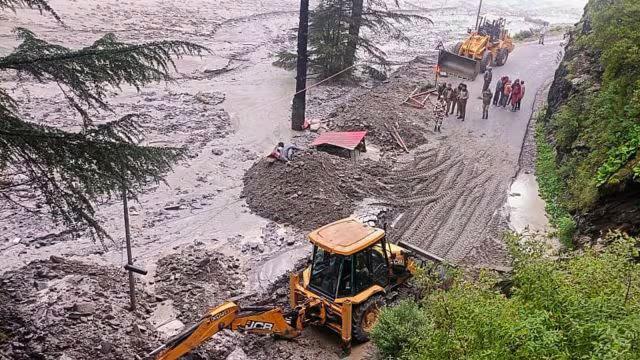
Glacial Lake Breach May Have Triggered Dharali Flash Flood: Expert
On September 17, 2022, a devastating flash flood struck Dharali, a small village in Uttarakhand’s Chamoli district, leaving a trail of destruction and loss of life in its wake. The sudden and unanticipated event has left experts scrambling to understand the root cause of the disaster. According to glaciologist Anil Kulkarni, there is a strong possibility that a breach in a glacial lake may have triggered the flash flood.
Kulkarni, who is also the director of the Indian Institute of Science’s (IISc) Centre for Ecological Sciences, suggested that satellite images taken in September 2022 showed signs of past lake formations in the area. This raises the possibility that a lake may have formed recently above the Kheer Ganga river, which flows through the Dharali village. If this is the case, the lake could have been breached due to movements in the glacier mass, leading to the catastrophic flood.
The theory is based on the concept of glacial lake outburst floods (GLOFs), which occur when a glacial lake forms above a glacier and eventually breaches, releasing a massive amount of water into the downstream areas. This can happen when the glacier melts rapidly, causing the lake to overflow or when the glacier’s front collapses, leading to a breach in the lake’s dam-like structure.
Kulkarni’s findings are consistent with the observations made by the Indian Space Research Organisation’s (ISRO) Cartosat-3 satellite, which captured images of the area in September 2022. The satellite images show signs of past lake formations, which could indicate that a lake may have formed in the recent past. However, it is essential to note that further investigation and analysis are required to confirm the exact cause of the flood.
The Dharali flash flood was one of the most devastating natural disasters to hit Uttarakhand in recent years. The event claimed the lives of at least 13 people, including children, and left several others injured. The flood also caused widespread damage to infrastructure, including roads, bridges, and buildings, leaving many without access to basic amenities.
The incident has raised concerns about the risks associated with glacial lake formation and the potential for GLOFs in the region. Uttarakhand is home to several glaciers, including the Siachen Glacier, which is one of the most prominent glaciers in the Himalayas. The region’s unique geography, with steep slopes and narrow valleys, makes it prone to flash floods and landslides.
The Indian government has been working to improve disaster preparedness and response in the region. In recent years, there have been several initiatives to enhance early warning systems, improve infrastructure, and raise awareness about the risks associated with natural disasters. However, more needs to be done to mitigate the impact of such events and protect the lives and livelihoods of people living in the region.
The Dharali flash flood serves as a stark reminder of the importance of understanding and addressing the risks associated with glacial lake formation and GLOFs. It is essential to conduct further research and monitoring to better comprehend the dynamics of glacial lakes and the factors that contribute to GLOFs. This knowledge can be used to develop effective strategies for mitigating the impact of such events and protecting the lives and livelihoods of people living in the region.
In conclusion, the theory that a glacial lake breach may have triggered the Dharali flash flood highlights the importance of understanding the complex dynamics of glacial lakes and the risks associated with GLOFs. Further research and monitoring are essential to better comprehend the causes of such events and develop effective strategies for mitigating their impact. As we continue to explore the complex relationships between glaciers, lakes, and the environment, we must also prioritize the safety and well-being of people living in the region.






